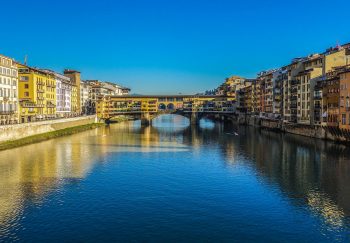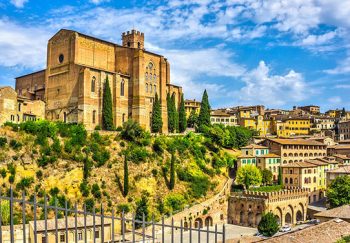Rome can be a huge city. It has many iconic attractions. You’d be wise to learn about Rome’s public transportation system. It will save you time and save you your feet by using the Metro or bus every now and again.
There are many options for transportation in Rome. The best option will depend on where you are starting from and what destination you want to go. The Metro network is not extensive, so it’s important to be familiar with the basics of how to get around Rome.
This map, which is used to help you locate your hotel and other major tourist attractions in Rome, can be used as a starting point. It’s located on the official website of ATAC, Rome’s transportation company. Although it’s difficult to view online, you can zoom in to get a better idea of the locations. It is difficult to bring this map, so you should pick up a map of Rome with the transportation routes (usually found at newsstands).
Rome Public Transportation Tickets
It is possible to interchange tickets for bus, tram, and metro tickets, which can be very convenient. Although there are annual and monthly transportation passes available, these are only for residents. Tickets can be purchased at newsstands, tabacchi (a sign with a large T) and automated Metro machines.
When you use your ticket for the first time, you must validate it. You can validate your ticket at turnstiles and on buses, trams and onboard of trams. Yes, there have been people who played the role of the “dumb tourist”, not validating their tickets, and then claiming ignorance to continue using the same cheap ticket. People who do this are also caught and fined EUR50 to 50. It’s up to each individual. Me? I have validated my tickets.
There are many ticket options available:
- BIT (Integrated Time Ticket – EUR1.50) – One-way ticket. The ticket is valid for 100 minutes and includes one Metro trip, but you can take as many tram or bus trips as you like.
- BIG (Integrated Daily Ticket), EUR6.00 – 24 hour pass valid for all transit methods, starting with the initial validation.
- BTI (Integrated Tourist Ticket), EUR16.50 – Valid for 3 days on all transit methods, starting with the initial validation.
- CIS (Integrated Weekly Ticket), EUR24.00 – Valid for 7 days on all transit methods, starting with the initial validation.
One Note about Transportation Safety in Rome
Some routes serve tourist attractions and are known as “pickpocket Express Lines.” This makes it easier for thieves to steal wallets or other valuables from tourists. No matter which bus, tram or metro you are using, be aware of your surroundings and protect your valuables. Be more vigilant if it’s busy. If you feel uncomfortable, get off the bus and wait for the next train or bus.
Are you ready? Here are some suggestions for transportation in Rome.
Rome Buses
Rome Buses – By Ludovic (creative Commons)
Buses can seem intimidating if you don’t know any of the local landmarks or the language. They don’t pull over at every stop like the Metro. You have to request one. The bus system in Rome is one of the most complex of all public transit systems. It’s worth learning the basics. Once you have figured it out, you will feel like you have the keys to the city.
You will need a Rome map with bus routes on it, as mentioned earlier. toh
This map is best to be picked up before you need it. You can lay the map out on the table before lunch so that you can make sense of it. The stops are indicated only by small numbers. There are no lines between them because there are so many. To see where it goes, you will need to connect the dots yourself by tracing a route between each number. It’s easy to find the right place once you know what you want. You’ll be happier that you did it over lunch than worrying about it at the bus stop.
Bus stops in Rome are marked by a placard placed at the top and bottom of a signpost. The bus lines are listed in columns with each stop the bus makes. The stop’s name is usually highlighted in some way – for example, a red box surrounding the stop name – to help you find your destination. It is also likely to appear at the top of the placard. Bus stops are listed in an order to show where they are going. Names that are lower than the stop you are looking at will be coming up on the route. Names that are higher than your stop will indicate which bus has been there before. For example, if you are at the Colosseo stop and see the Termini stop higher than the Colosseo, you will need to cross the street to find the bus that goes the opposite direction to Termini. If Termini is listed under Colosseo, you are heading in the right direction.
You shouldn’t rely on the signage or bus driver to tell you when to get off. Bus drivers don’t always appreciate being asked for help. There are no signs on the buses that will indicate where to stop next. It’s best to know where you are going, and then follow the route on your map. (Be aware that the bus will not stop at every stop unless someone asks or is waiting), or simply ask another friendly passenger. Worst case scenario? You see your stop a bit late and request the next stop. This will cause you to walk further than you expected. It’s not a huge deal.
Buses are usually in operation from 5:00 AM to midnight. A few routes have Night Buses, marked with an N after the bus number. Night Buses run from midnight to 5:00 AM. Although they are used in the most busy areas of the city, the Night Bus routes don’t operate the same as regular bus routes.
Update: If your smartphone is connected to the internet,
Reader Laurel posted a comment about another method to navigate the Rome bus system. I thought it was worth sharing with anyone planning to use their smartphone in Italy. Before you travel, please check with your mobile provider to ensure your device is compatible in Italy. Also, find out the cost.
Laurel says:
“If you have a smartphone, use the browser and bookmark https://www.muovi.roma.it. You can click on “bus waiting time and routes” to find out when the next bus will arrive at your stop. It can also be used on a desktop or laptop. It allows you to track your bus as it moves, allowing you to see where the next stop is. It is a great tool that I use when I am on unfamiliar routes.
She also noted that many of the buses in Rome have now got on-board signs that show the next stop. This is incredibly helpful if you don’t own a smartphone.
Rome Metro
Rome Metro – By Rob Kim (creative commons).
Rome’s Metro network is made up of two lines: Metropolitana Linea B and Metropolitana Linea. For a city of this size, why not more? Every time someone digs underground in Rome to build anything, they run into ancient ruins. The construction of Line C began many years ago. However, it was quickly stopped and turned into an archaeological dig. It’s now a joke in Rome. The Metro is not my first choice for getting around Rome, even though I love subways.
It is possible to get to the main attractions by Metro if your hotel is close to a Metro station. You don’t need to buy multiple Metro tickets that you may not use.
Metropolitana Linea A refers to the red line and Metropolitana Linea B refers to the blue. They only intersect at Termini Station. Metro stops are marked on transportation maps with a red square with a white M in their middle. Line A includes stops close to the Vatican, Piazza del Popolo and the Spanish Steps. Line B stops near the Pyramid of Ceestius, Circus Maximus, Colosseum and EUR. Metro runs from 5:30am to 11:30pm on Sundays and Fridays, and ends at 1:30am on Saturdays.
Rome Trams
Rome has a tram system that is above-ground. Although there are only seven tram lines in Rome they can be very useful if you need to get to certain places, such as the Trastevere area. They are also on the same ticketing system with the Metro and bus, making it convenient to use them whenever they’re available.
The same Rome maps are used to mark tram lines. They’re almost indistinguishable from bus lines. How can you tell if it’s a tram and not a bus? It’s only line 19.
Like the Metro, trams stop at all stations so you don’t have to worry about getting lost. Trams can also be used to get you to the Colosseum and Vatican as well as the Pantheon.
Taxis in Rome
There are many taxis in Rome. Also, there are stories of people being conned by taxi drivers. They should be used as a last resort for getting around Rome. These buses can be safer than the Night Buses, but they aren’t cheap no matter how often you use them.
You won’t be able to wave down taxis if you plan on going anywhere by taxi. You can find taxi stands all over the city. If you need a taxi, you should line up at one of these stands. Taxi stands can be found at major attractions such as the Colosseum and the Vatican as well as major intersections or piazzas.
Keep in mind, too, that Roman taxi drivers have a reputation for ripping off unsuspecting tourists. I suggest Shelley’s excellent article, How to Take a Taxi in Rome.











